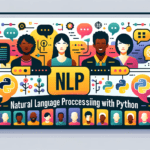Introduction:
Hello, fellow data enthusiasts and business mavens! Today, we’re diving into the riveting world of Machine Learning (ML) and its practical applications in the ever-evolving business landscape. Gone are the days when machine learning was just a fancy term tossed around in tech conferences. It’s here, it’s real, and it’s reshaping the way businesses operate. So, buckle up as we embark on this journey to decode the mysteries of machine learning and discover how it’s revolutionizing businesses, one algorithm at a time!
Machine Learning: The Business Game Changer
Machine learning, a subset of artificial intelligence, involves teaching computers to learn from and interpret data, making decisions with minimal human intervention. It’s like having a super-smart assistant who’s always learning new tricks without being explicitly programmed.
Key Components of Machine Learning in Business:
- Data Processing: Machine learning thrives on data. The more quality data it devours, the smarter it gets.
- Algorithms: These are the rules that machine learning follows. They’re like recipes that guide how data is analyzed and interpreted.
- Model Training: This is where the magic happens. Models are trained using data to recognize patterns and make predictions.
Practical Applications of Machine Learning in Business:
Customer Relationship Management (CRM)
Machine learning algorithms can analyze customer data to provide personalized experiences. They’re like the digital Sherlock Holmes, deducing what customers want before they even know it themselves.
Sales and Marketing Optimization:
Machine learning can predict customer behavior, optimize pricing strategies, and recommend the best time to launch marketing campaigns. It’s like having a crystal ball but with data instead of magic.
Supply Chain Management:
Machine learning helps predict demand, optimize inventory levels, and enhance logistics. It turns the complex web of supply chain management into a well-oiled machine.
Fraud Detection and Risk Management:
Machine learning algorithms are adept at spotting unusual patterns and potential frauds. They’re the digital watchdogs, sniffing out financial discrepancies and risks.
Human Resources:
From screening resumes to predicting employee turnover, machine learning can transform HR processes. It’s like having an unbiased, data-driven HR consultant.
Machine Learning in the Future: The Road Ahead
The Rise of Automated Decision-Making:
The future of machine learning in business points towards increasingly automated decision-making processes. It’s like autopilot for business decisions, but smarter and more data-informed.
Ethical Considerations and AI Governance:
As machine learning takes a more central role in business, ethical considerations and AI governance will become crucial. It’s about ensuring that these smart algorithms play fair and respect privacy.
Integration with IoT and Edge Computing:
The convergence of machine learning with IoT and edge computing will lead to smarter, interconnected business environments. Imagine a world where everything from coffee machines to factory robots communicates and learns.
Challenges and Considerations:
Data Privacy and Security:
The Achilles’ heel of machine learning is data privacy and security. Businesses must tread carefully, respecting customer privacy while harnessing data’s power.
Skill Gap and Talent Acquisition:
The growing demand for machine learning expertise has led to a significant skill gap. Businesses must focus on training and acquiring talent to stay ahead in the ML race.
Conclusion:
In conclusion, machine learning is not just a fleeting trend; it’s a transformative force in the business world. Its ability to extract insights from data and automate complex processes is invaluable. As businesses continue to navigate the digital landscape, embracing machine learning is not just an option; it’s a necessity for staying competitive and relevant.
So, whether you’re a startup or a corporate giant, it’s time to hop on the machine learning bandwagon. The future is here, and it’s coded in algorithms!




